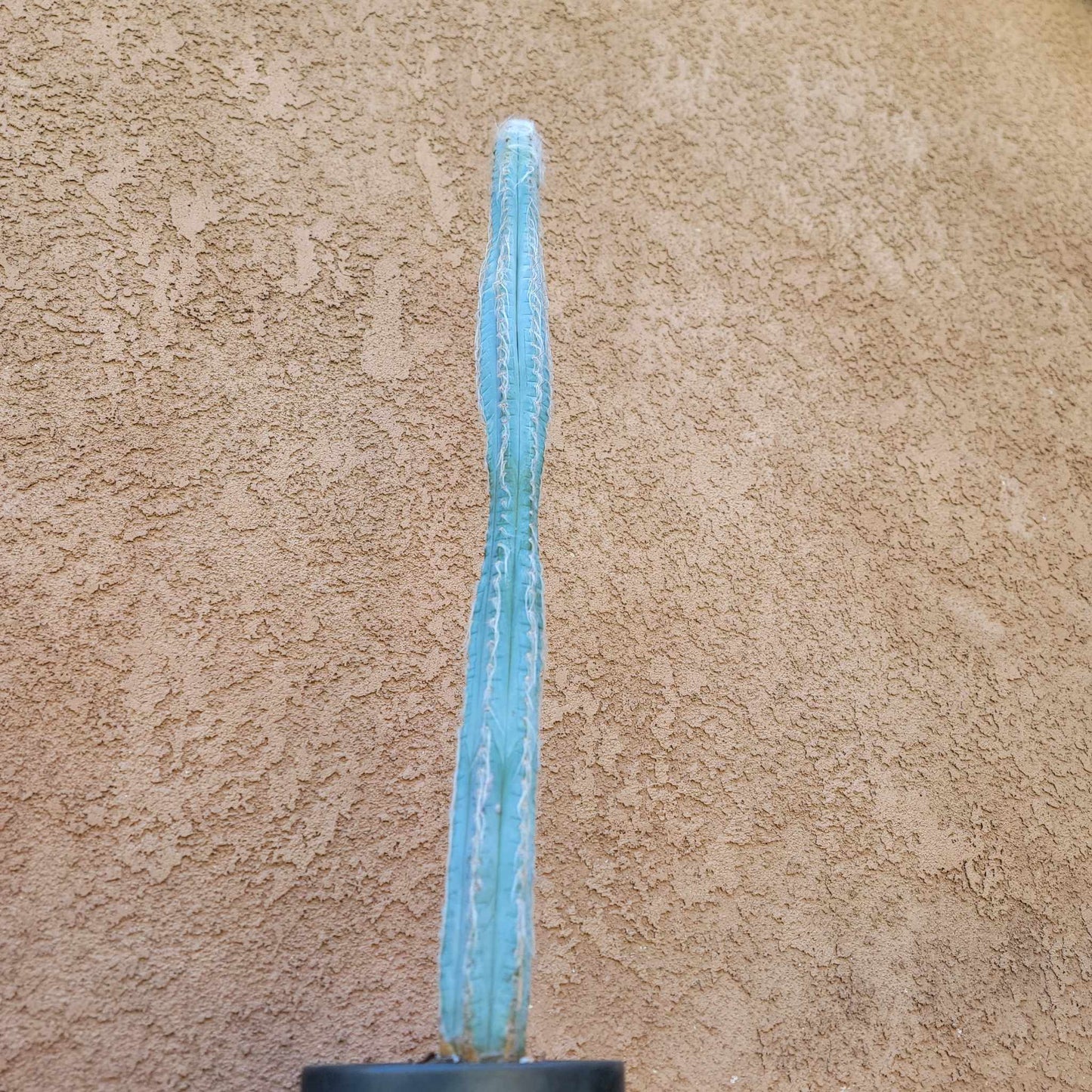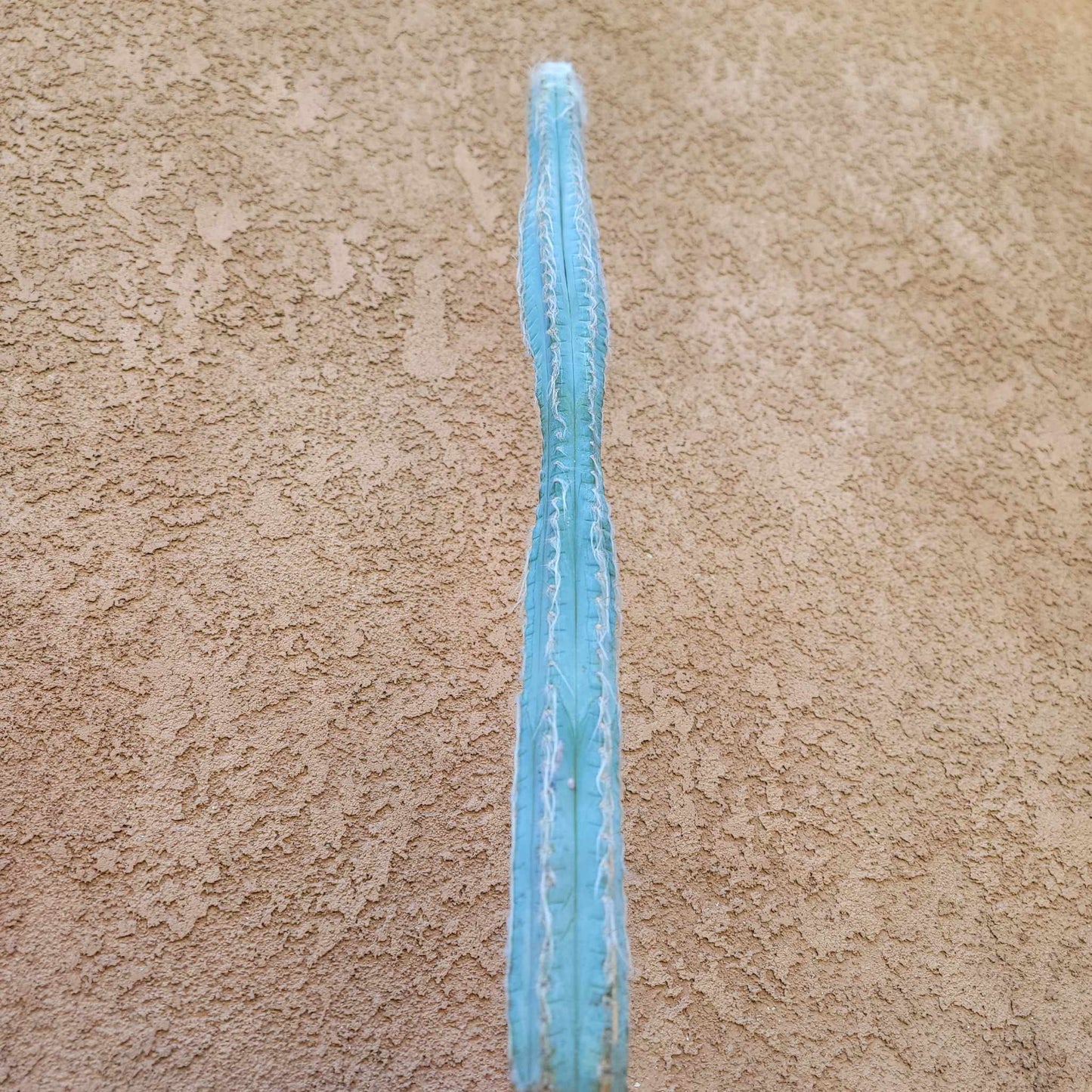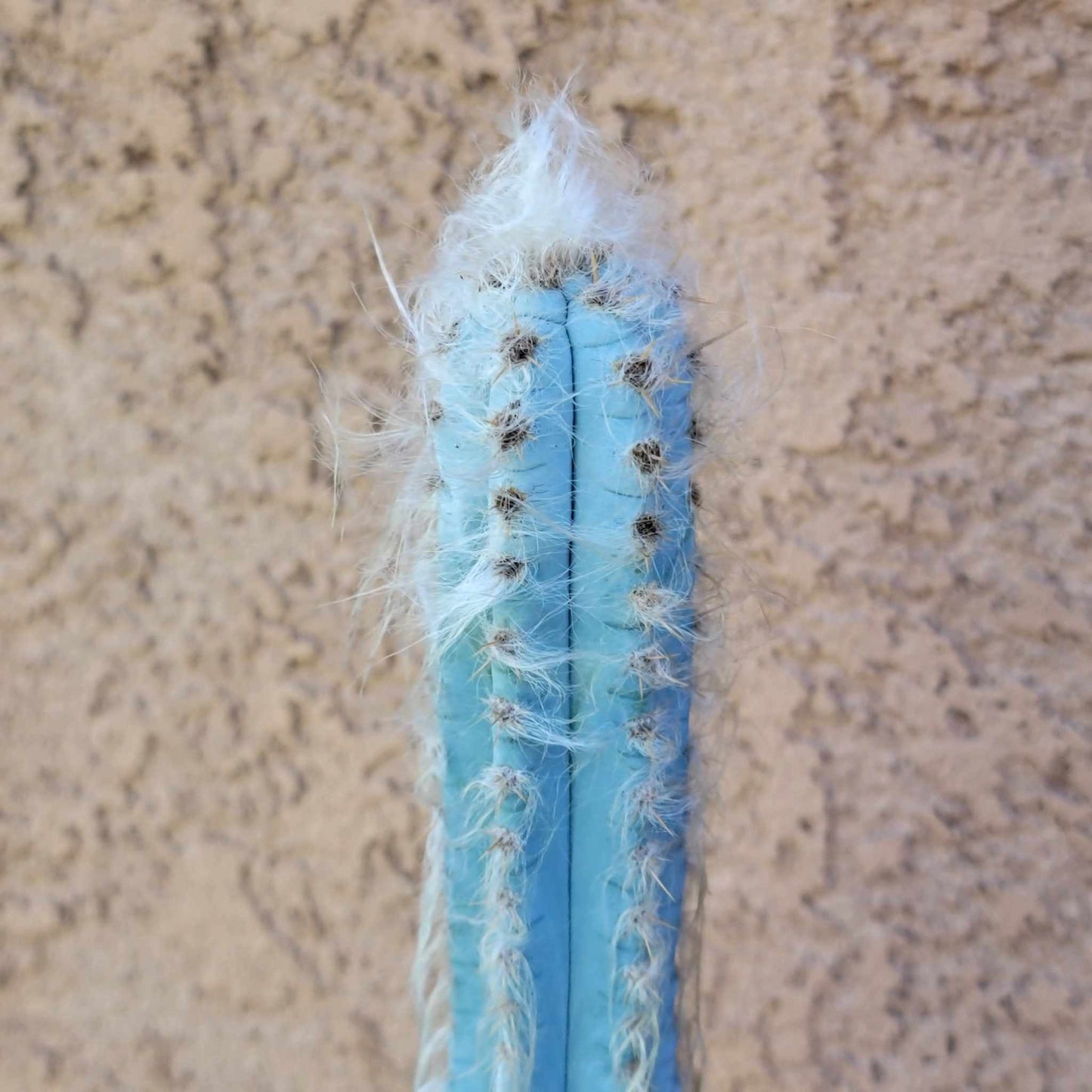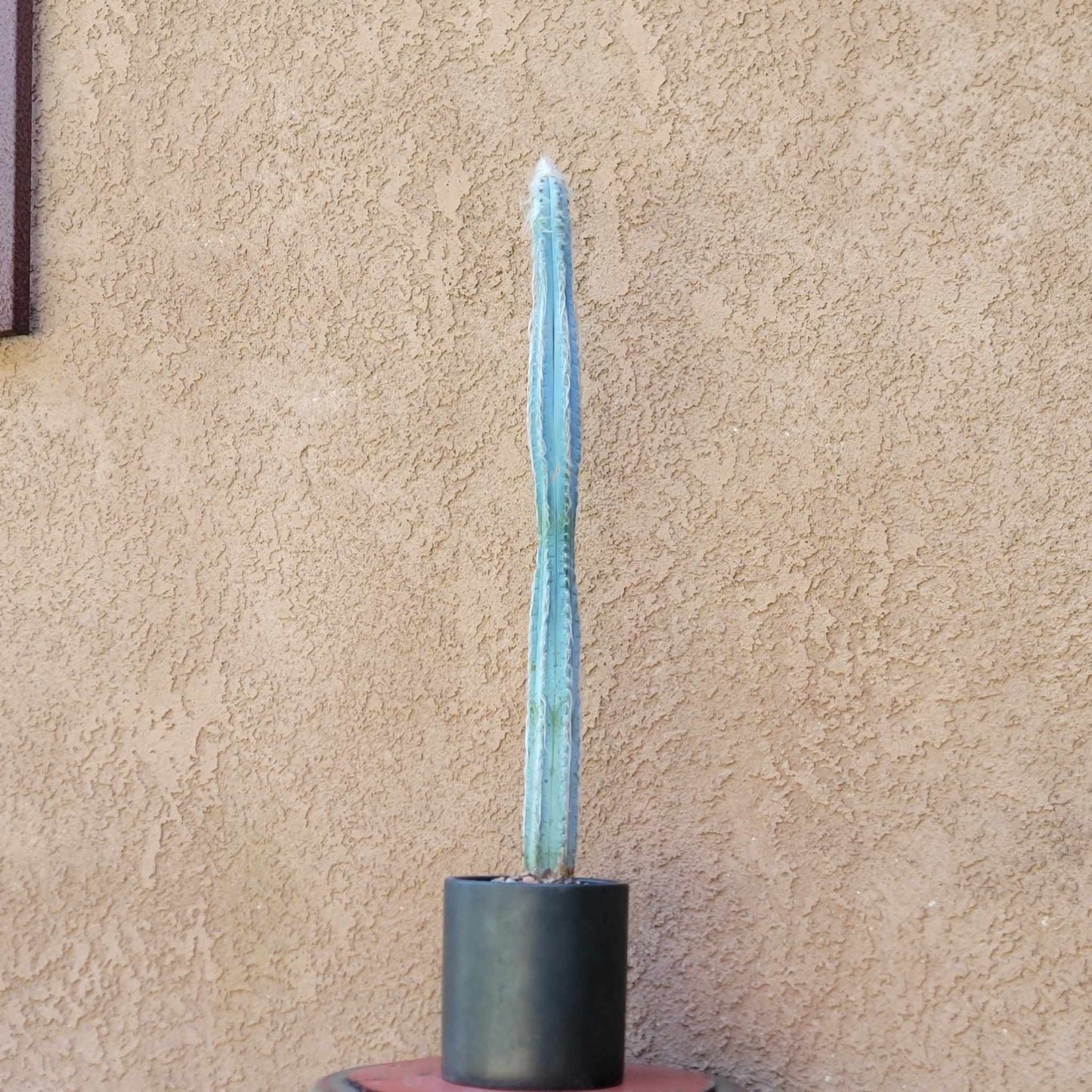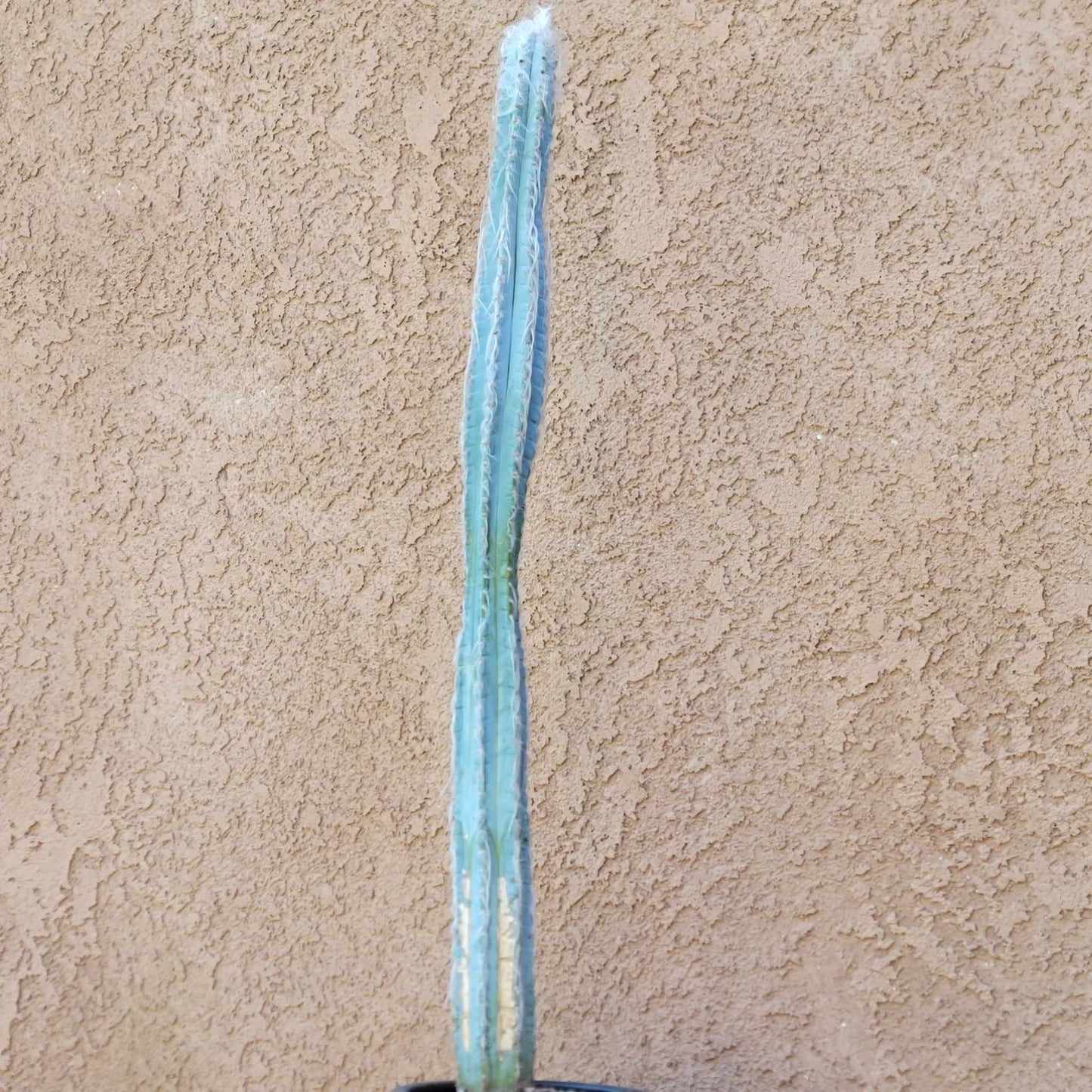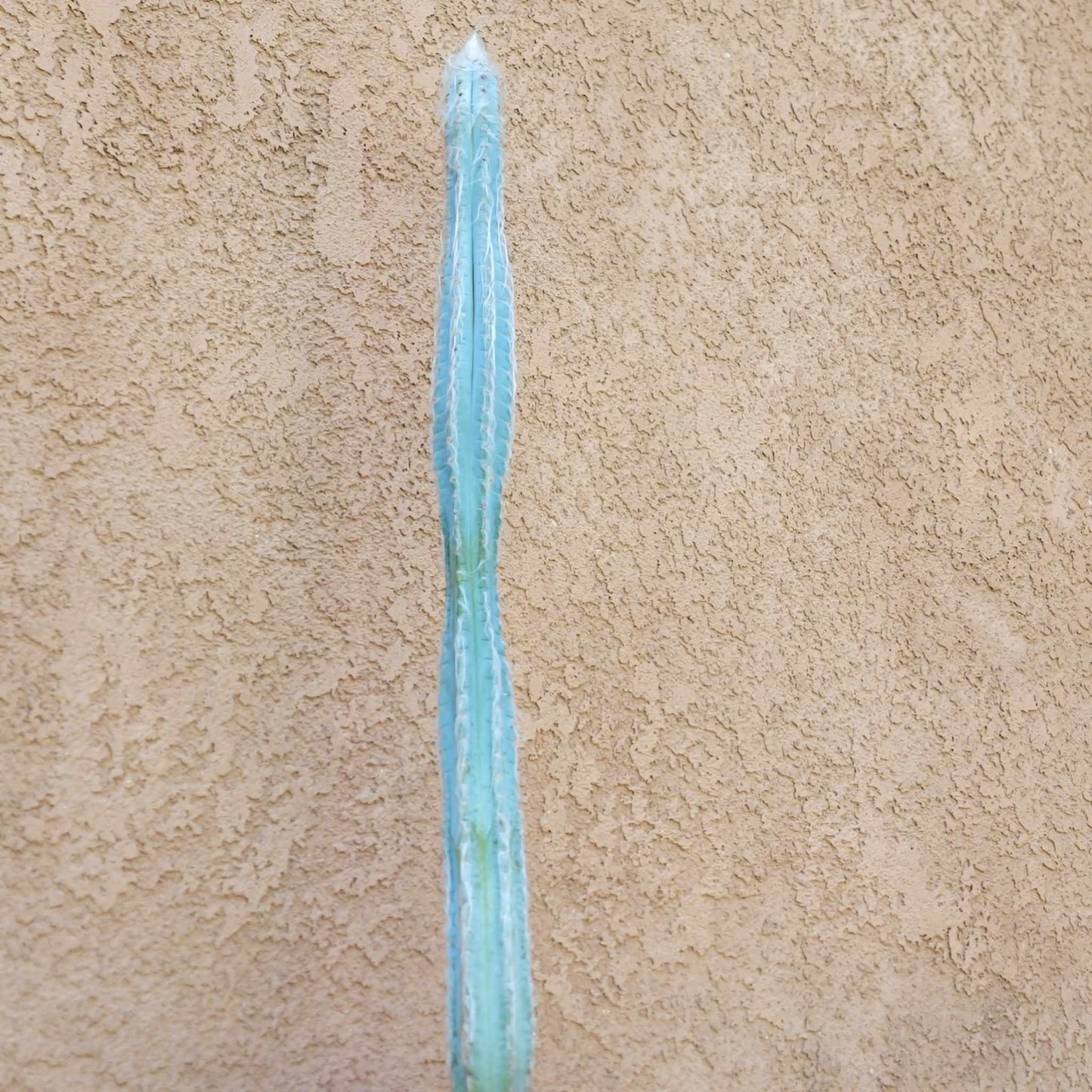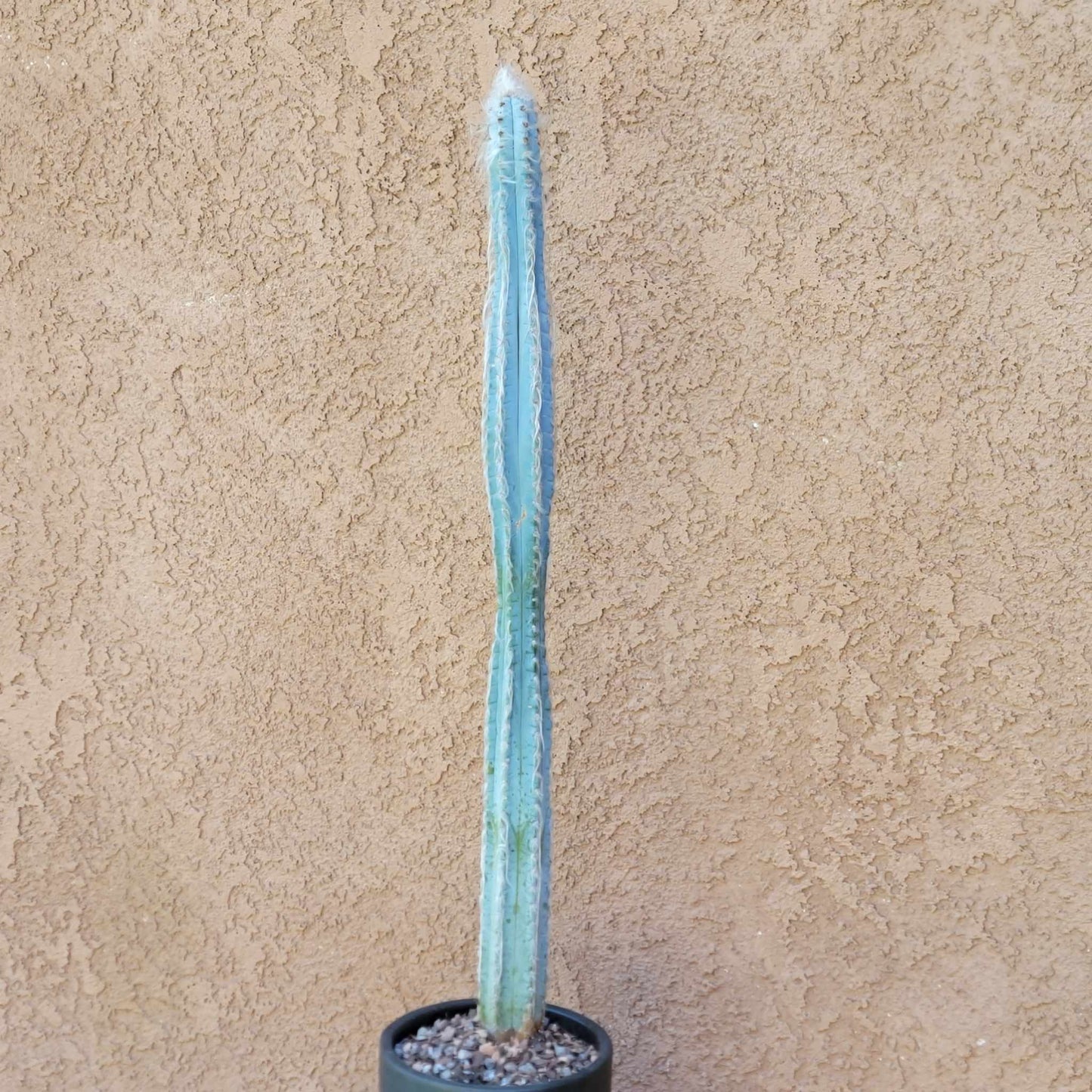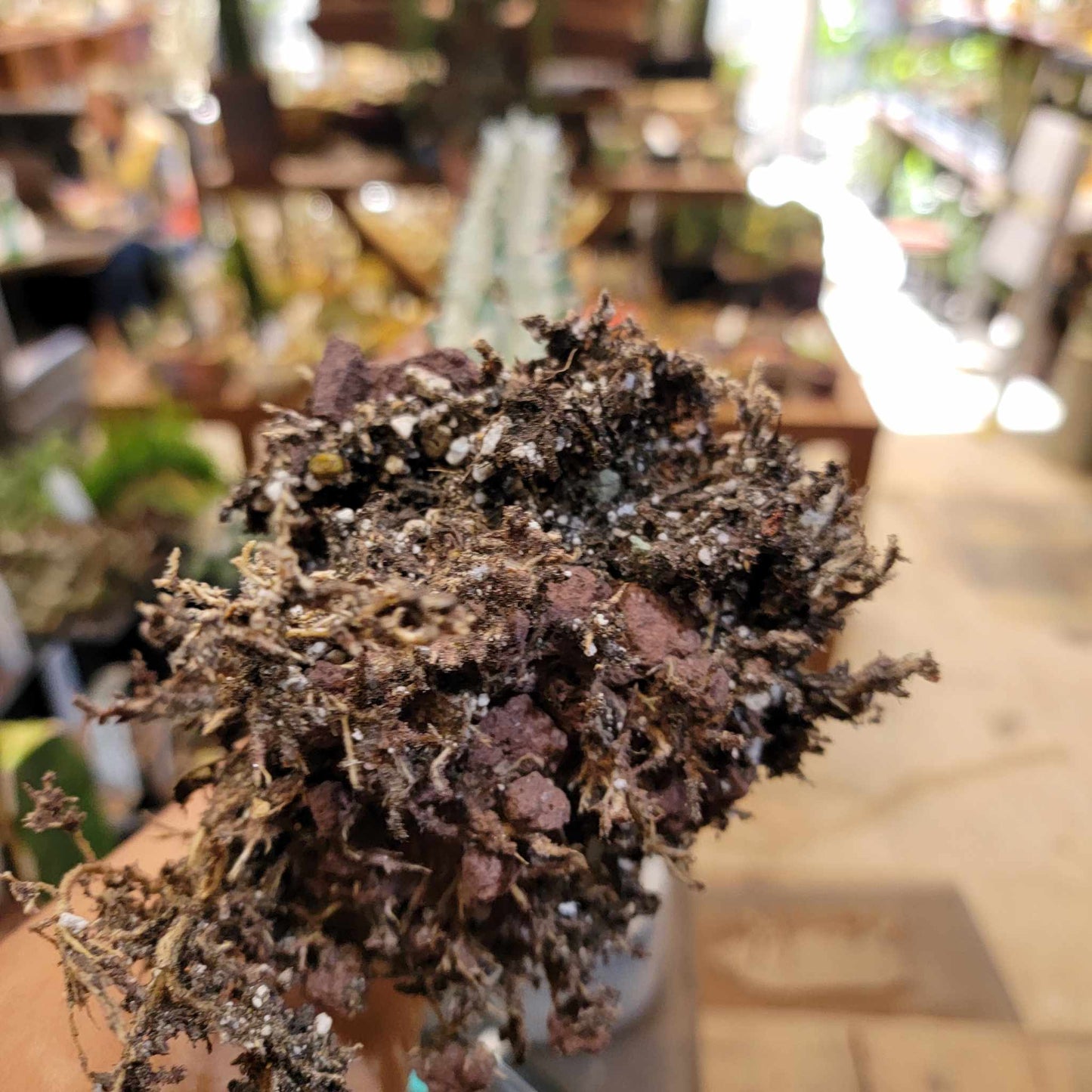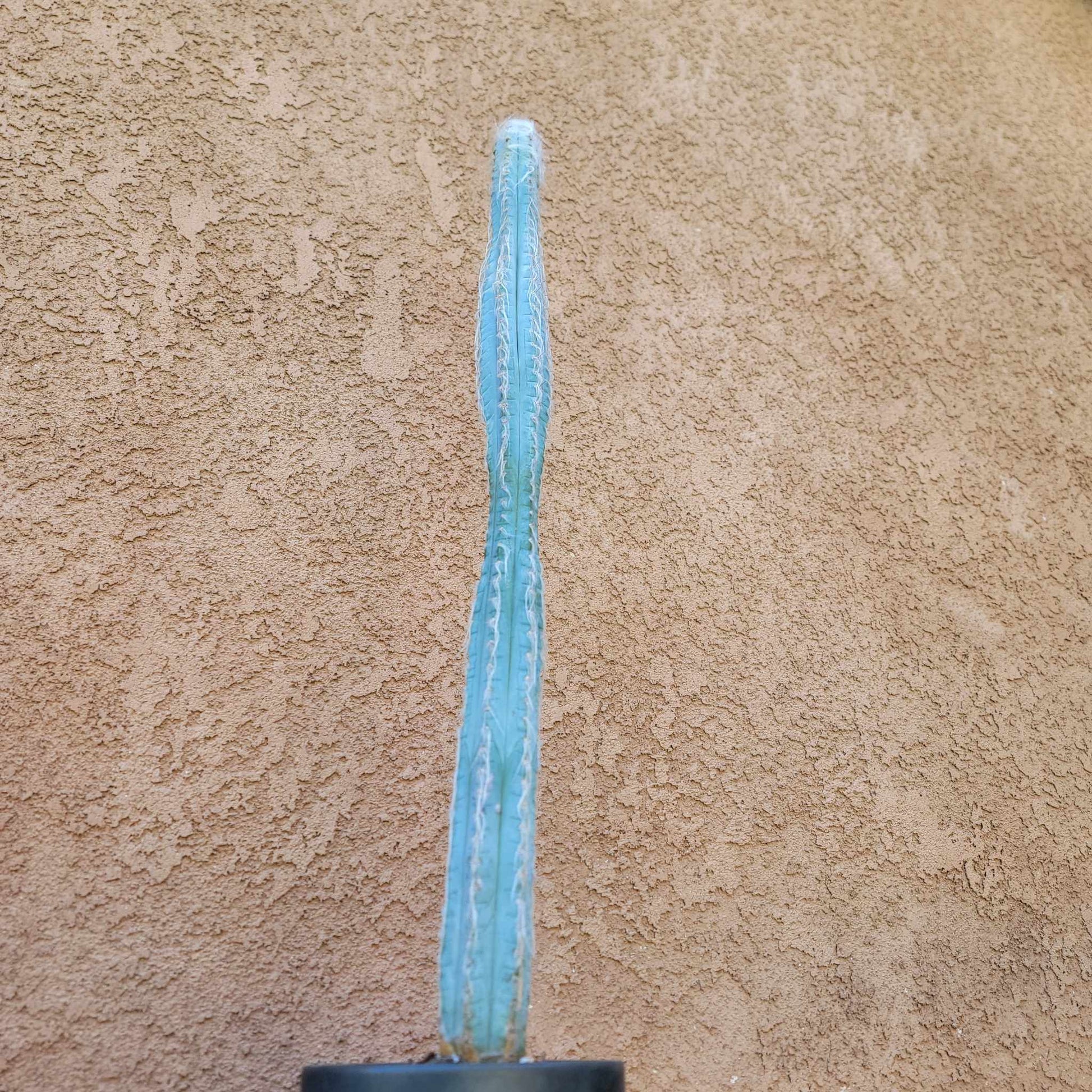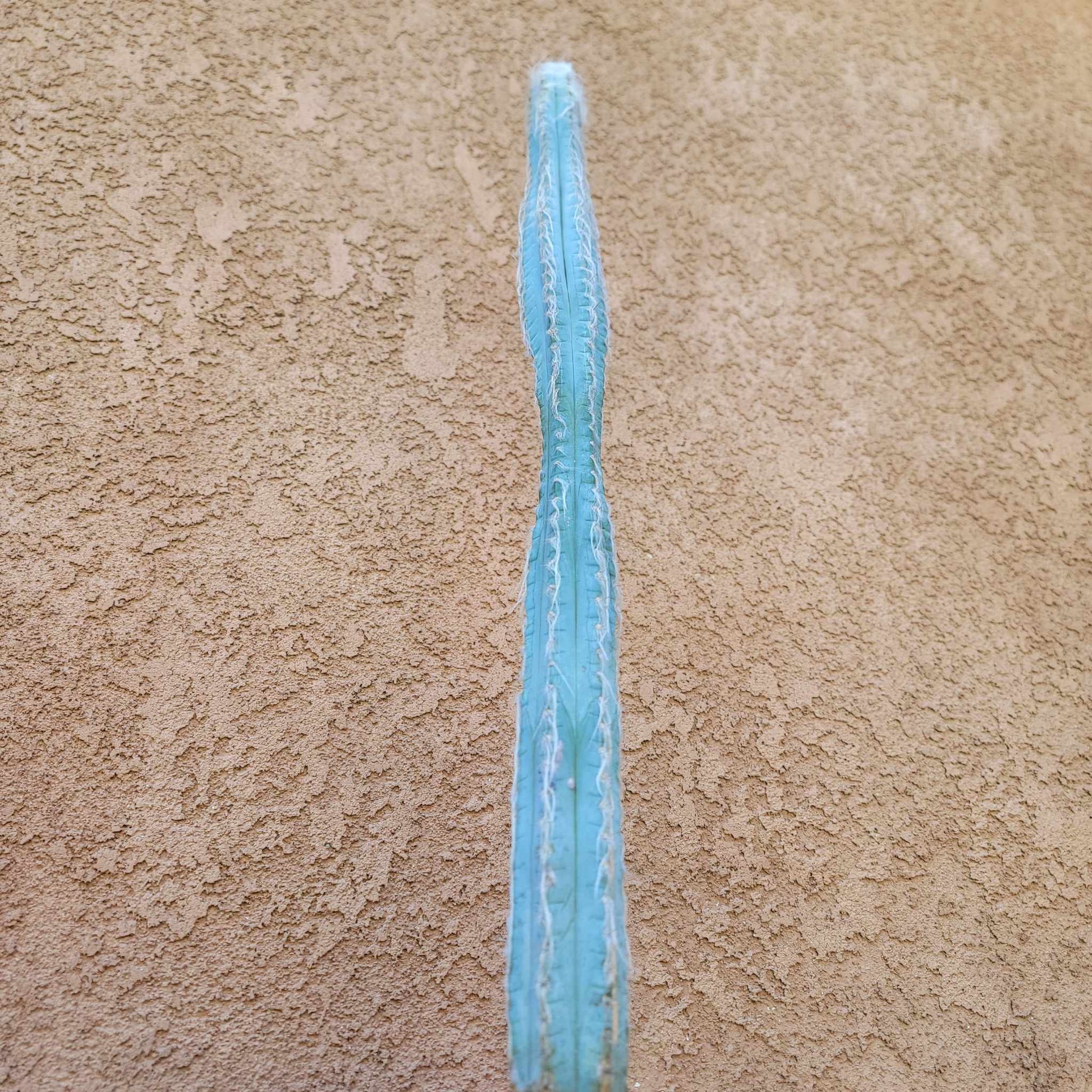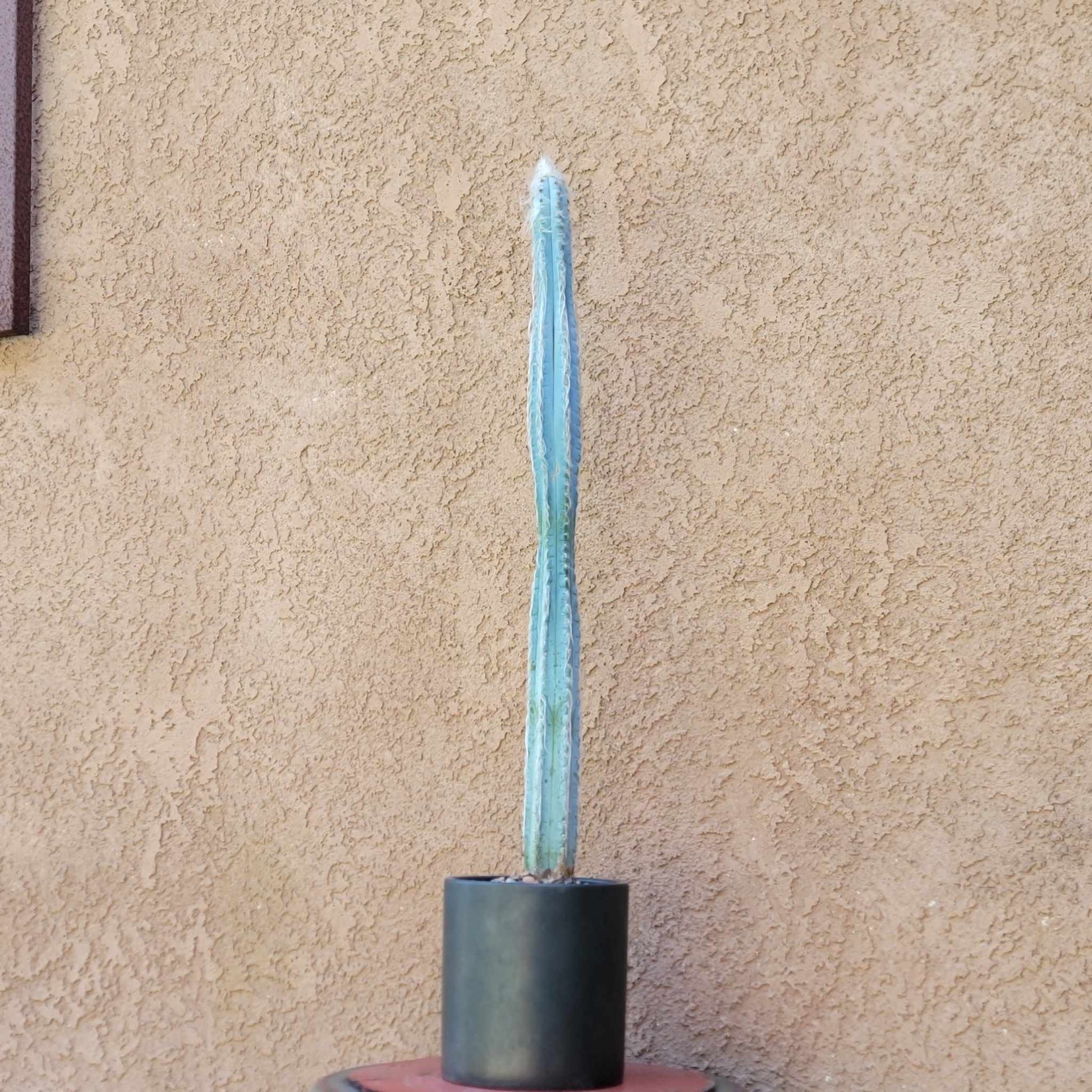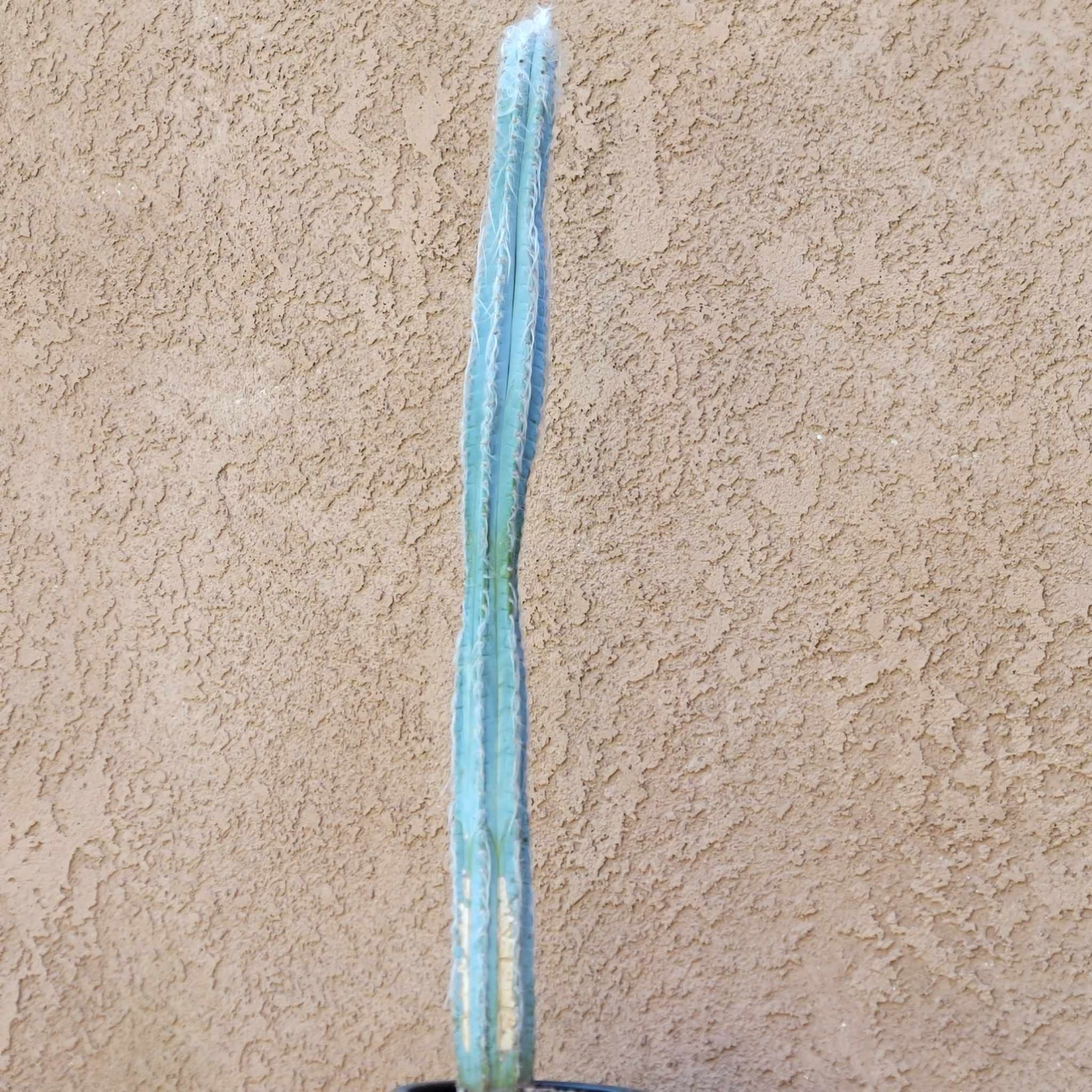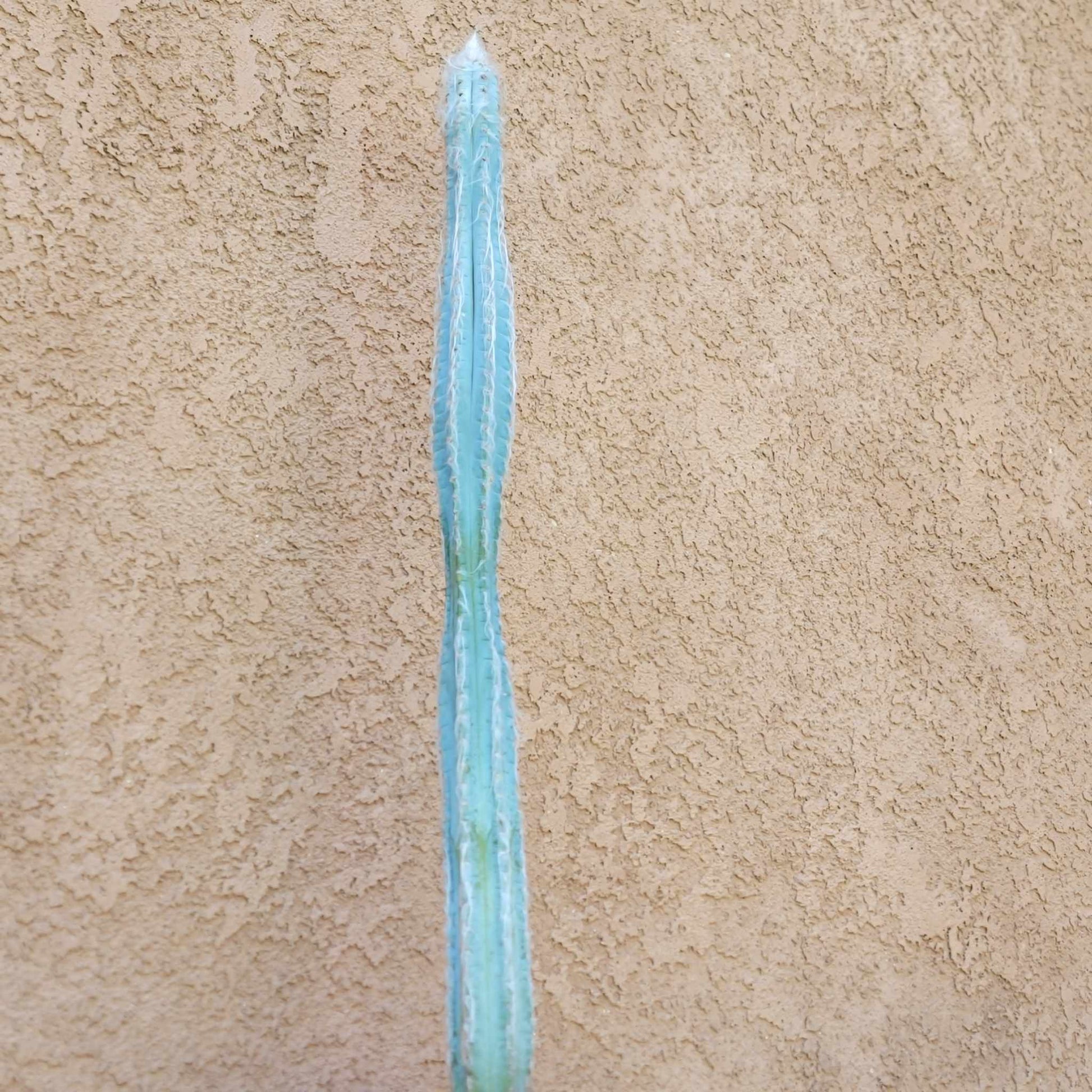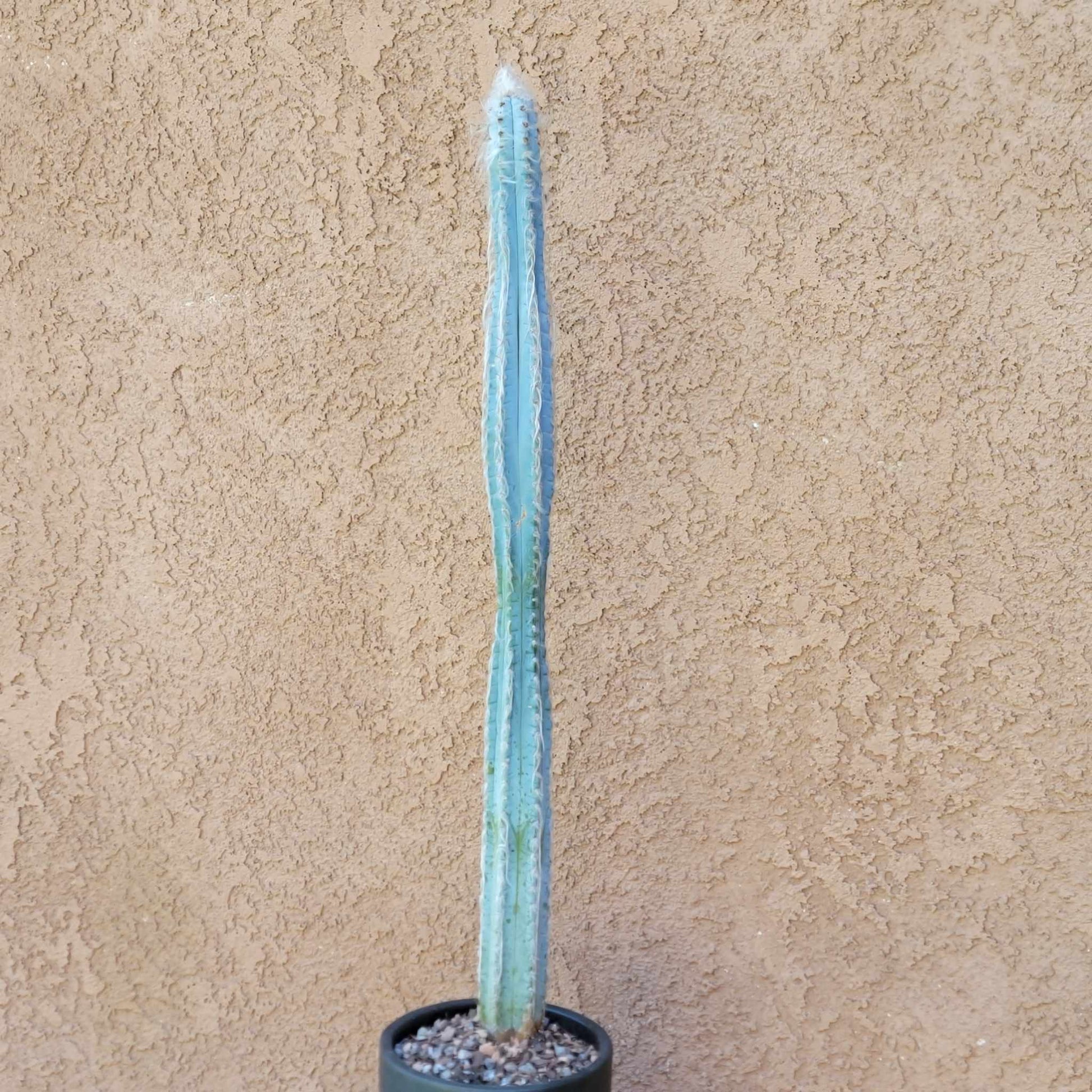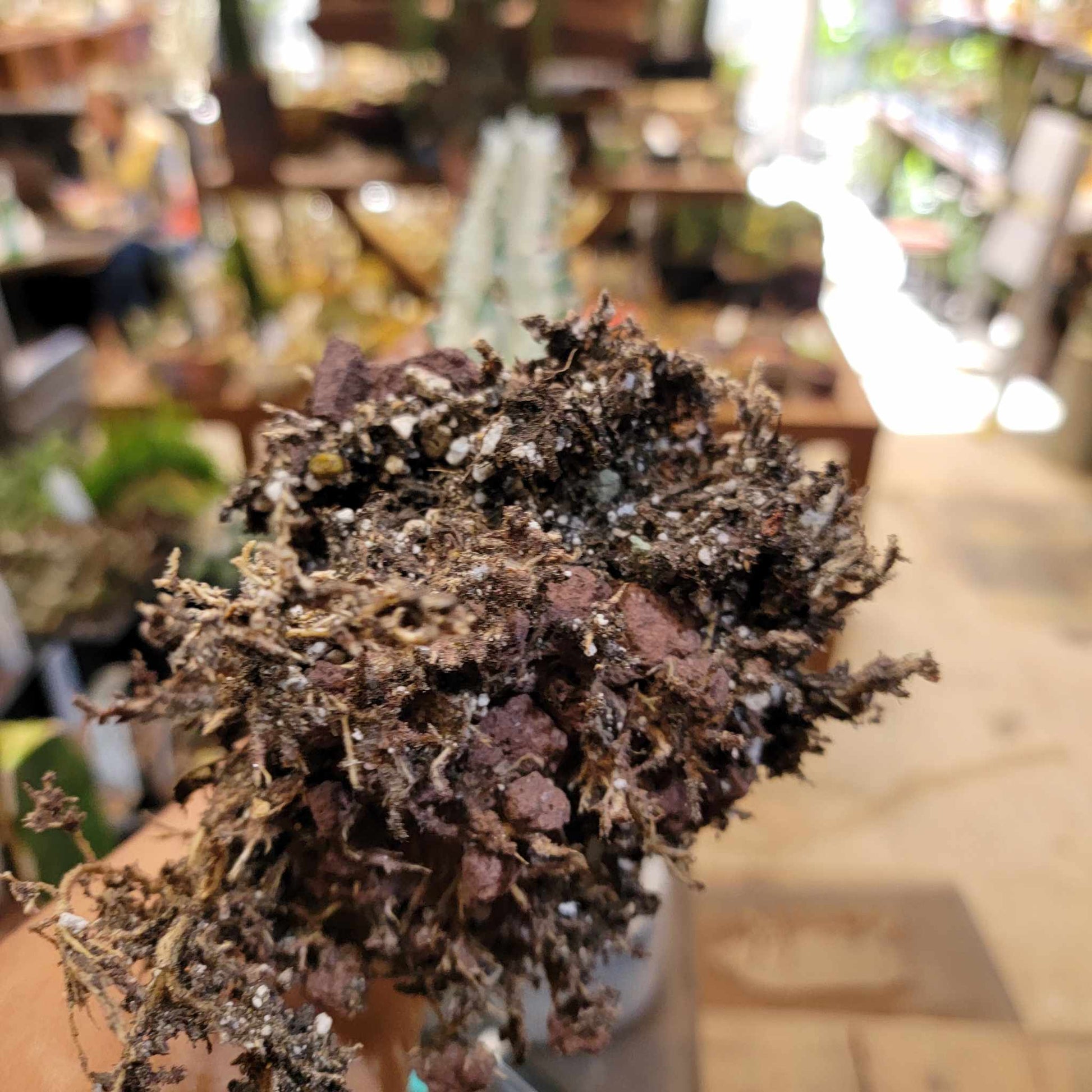Shangri-Ha Cactus Ranch
Pilosocereus Pachycladus - Blue Columnar Cactus
Pilosocereus Pachycladus - Blue Columnar Cactus
Regular price
$195.00 USD
Regular price
$195.00 USD
Sale price
$195.00 USD
Unit price
per
Shipping calculated at checkout.
Couldn't load pickup availability
Pilosocereus Pachycladus - Blue Columnar Cactus
You will receive this exact specimen.
Measures 24" tall at present.
Rooted.
Shown here in terra cotta pottery (sold separately).
Will be shipped bare root.
The Pilosocereus pachycladus, also known as the Blue Torch Cactus or Blue Columnar Cactus, is a striking, columnar cactus species native to the Caatinga biome of northeastern Brazil. It is characterized by its unique bluish-green (sometimes silvery) hue and columnar growth habit.
Key Characteristics:
- Appearance: Upright, columnar stems with a silvery-blue trunk and vertical growth pattern. The stems have prominent ribs lined with golden-yellow spines that turn gray with age.
- Mature Size: Can reach heights of up to 33 feet (10 meters) in its native habitat. In cultivation, it typically grows to a more manageable size of 10 to 20 feet tall and 3 to 6 feet wide.
- Flowers: Produces white, nocturnal flowers that bloom at night in late spring or early summer. These flowers are pollinated by bats and moths.
- Fruits: Globular, flattening, reddish-purple fruits.
- Growth Rate: Slow to moderate.
- Hardiness: Suitable for USDA zones 9-11. It cannot survive a hard frost and needs to be protected from temperatures below 50°F (10°C).
Cultivation and Care:
- Light: Needs bright, direct sunlight for at least 4-6 hours daily to maintain its vibrant blue color. Gradual sun exposure is recommended when transitioning outdoors to prevent sunburn.
- Watering: Drought-tolerant. Water thoroughly when the soil is completely dry, and reduce watering in the dormant winter months. Avoid overwatering, which can lead to root rot.
- Soil: Requires well-draining, sandy soil, such as a cactus and succulent mix. Ensure pots have drainage holes to prevent waterlogging.
- Fertilizing: Fertilizer is not strictly necessary but can encourage faster growth. A low-nitrogen, high-phosphorus fertilizer (e.g., 5-10-5 NPK) can be applied once a year in spring.
- Repotting: Repot every 2-3 years or when the plant outgrows its pot. Choose a heavy pot to support the plant's height.
- Propagation: Easily propagated by stem cuttings. Allow cuttings to callous over before planting in well-draining soil.
Uses and Other Information:
- Ornamental: Widely cultivated as an ornamental plant due to its unique appearance and striking flowers.
- Traditional Medicine: Believed to have medicinal properties and has been used in traditional medicine to treat various conditions, including fever, inflammation, and pain.
- Non-toxic: Considered non-toxic to humans and pets, but its sharp spines can cause injury.
- Pests and Diseases: Generally resistant to pests and diseases, but can be susceptible to mealybugs, scales, spider mites, and root rot from overwatering.
